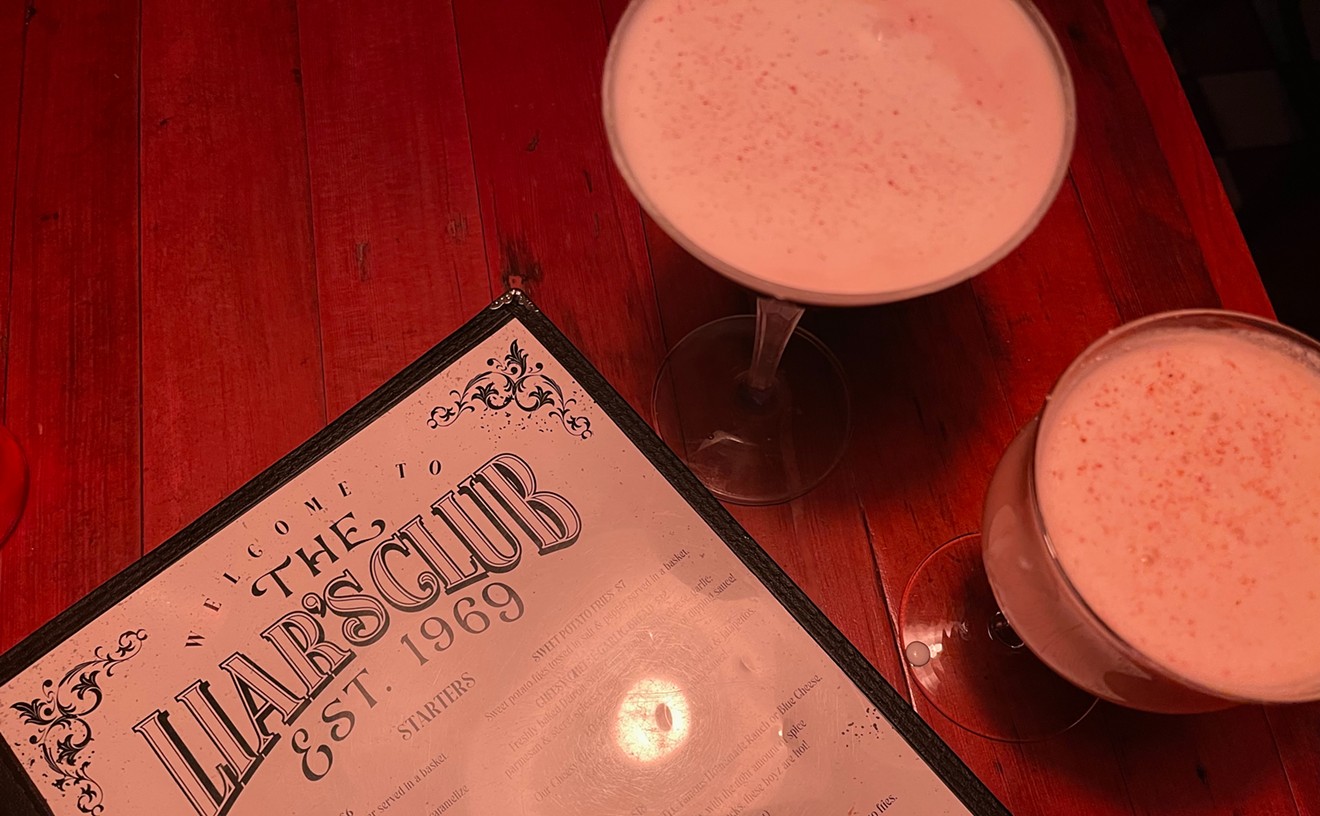America is a melting pot of cuisines. But when it comes to Filipino food, not so much.
Ironic considering the history of the archipelago with more than 7,000 islands reflects such a wide diversity of people itself — Chinese, Spanish, American, even Mexican influences — each weaving its respective cuisine into the country's culinary fabric. But as it relates to the Western palate, the food of the Philippines, unlike its Thai and Vietnamese neighbors, has never really caught on in the United States. The criticism? Too sweet, too oily, and, quite frankly, too bizarre.
Take balut, a common street food in the Philippines. On the outside, it appears to be a normal egg. But when cracked open, there's a fertilized duck embryo inside.
"The secret to a good one is the amount of time in the shell," Angelito Soliman tells me. "At 17 days, it will be too mushy. At 19 days, too hairy. Eighteen days is perfect."
Soliman is the chef and owner of Manila Sunrise Gourmet. Originally from the province of Pompanga, the culinary capital of the Philippines, Soliman moved to the Valley in 2002, but it wasn't until three months ago that he opened his Filipino eatery, Manila Sunrise Gourmet, in a Mesa strip mall.
"Filipino food is not fast food," Soliman says. "It's not like a quick American breakfast. The longer you cook the dishes, the better they taste."
Using the memories of home-cooked meals he made with his mother while growing up in the Philippines, Soliman offers a small menu of traditional Filipino dishes, a deli case of delights to order with your meal or to take home, and, like many Filipino restaurants, a small buffet of whatever he's decided to make for the day.
"In the Philippines, it's called turo-turo, or 'point-point,'" he says, "because you just point at what you want to eat."
With an abundance of pork, rice, and dishes spiked with vinegar, garlic, and soy sauce, there's more to Filipino food than the not-for-the-timid balut (which, Soliman says, he'd like to offer one day). And unless you're a strict vegetarian, chances are you'll find a dish or two to enjoy.
There's no menu, just a listing of dishes written on colorful squares of paper on the back wall, which can make ordering at the counter a bit daunting for first-time guests unfamiliar with the fare. Not to worry: Soliman is usually on hand to help, and introducing Americans to the food of his homeland clearly is one of his favorite parts of the job. Even the restaurant's Filipino clientele is happy to assist in the decision-making. Perhaps by walking you through the dishes on the turo-turo or nodding their heads in approval when the dinuguan arrives at your table. And the wallet-friendly prices make this dining journey an affordable one — especially with a few Filipino-food-curious in tow.
You could start with a dozen lumpiang Shanghai. Smaller and skinnier than the lumpiang prito (fried spring roll) and lumpiang sariwa (fresh spring roll), they're about the size of lipstick tubes, with fillings of seasoned pork wrapped tightly and fried until brown and crispy. Like the accompanying sweet and sour dipping sauce, the appetizer affirms the cuisine's Chinese influence. Better are the siopao, or savory steamed buns, another snack adopted from the Chinese. Filled with pork laced with star anise, brown sugar, hoisin, and flecked with bits of hard-boiled egg, these downy, fist-size snacks — meant to be eaten sans utensils — are not always available, but when they are, order them up in a hurry.
Remember the "abundance of pork" thing? You'll find it all over Manila Sunrise, with most dishes accompanied by rice sprinkled with bits of toasted garlic. The meat can be had as skewers of chunky pieces of tender pork with a salty-sweet marinade; as the popular lechon kawali, fatty hunks of pork belly (a bit overcooked on my visit), boiled with garlic and peppers, deep-fried until the salty skin crackles, and served with a liver sauce; and as tokwa't baboy (bean curd and pork), in which the saucy destination for pieces of gristly pork belly and deep-fried tofu is a strong mixture of soy sauce, vinegar, onions, and scallions.
Not for the timid is the Filipino comfort dish dinuguan. Though it may not look appetizing, this dish of fatty and crispy pork belly pieces covered in a clingy, near-black sauce of pig's blood, garlic, and vinegar, and topped with a serrano pepper to bring a bit of heat is as unique as it is flavorful. Best to not judge by appearances before giving it a taste.
For breakfast lovers in search of something different, there are silogs. The simple Filipino breakfast, served all day long at Manila Sunrise, features fried rice, over-easy eggs, and your choice of sweet or salty meats. Best with longganisa, short, plump, and decidedly sweet sausages, it can also be had with tapa (dried or cured beef), jeprox (dried fish), and even Spam.
Less pork-y and more fanciful is the noodle dish pancit palabok. Featuring rice noodles topped with a thick, red-orange shrimp sauce and topped with slices of hard-boiled eggs, shrimp, cubed tofu, chicharrones (if requested) and suggested squirts of fish sauce and lemon, the dish's myriad textures and tastes make it one of the more complex selections.
And for those wanting to forgo the pork altogether, there's the chicken inasal. No ordinary grilled fowl, what makes this tender piece of moist meat interesting is its lush marinade of lemongrass, garlic, ginger, lemon, vinegar, and Sprite in addition to a brushing of achuete (annatto seeds) oil. Soliman tells me the secret of its success is to marinade the chicken overnight and then freeze it until it's ready to be prepared.
At the end of the meal, don't miss the traditional Filipino parfait halo-halo. This mixture of shaved ice and evaporated milk added to sweet beans, bananas, yam, coconut meat, and sugar palm fruit, then topped with purple yam ice cream and a piece of leche flan, is a sweet and creamy dessert you won't soon forget come next summer. And when it's mixed together, the colorful concoction, served in a tall, clear plastic cup, is an eye-popping, slurp-worthy treat of the inner-child kind.
Given the assimilation problem of Filipino food in America, the leftover deli décor on the walls of Manila Sunrise — a Route 66 sign, a 1950s rock 'n' roll guitar — seem outright comical amid the condiment counter sporting fish sauce, vinegar, and banana ketchup and a television tuned to a Filipino cable channel. Soliman's Filipino customers barely seem to notice. They're too busy sitting down for a meal at one of the few scattered tables, waiting in line at the turo-turo for dishes like adobo (fall-apart pork braised in vinegar, garlic, and soy sauce) and the vegetable dish, pinakbet, or grabbing an order of crispy pata (deep fried pork knuckle) to go.










